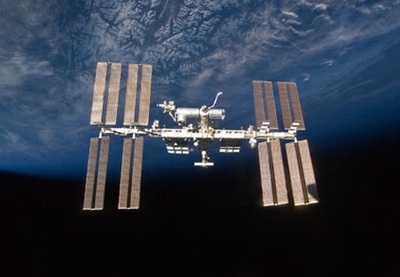Towards a smarter future in spaceby Mark V. Sykes
|
| It is time to be trailblazers—not to be first and plant flags, but to find a path for the rest of us to follow. |
What do we want our future to be 50, 100, 200 years from now? What needs to be done to achieve it? The Augustine panel, in its recent review of US human spaceflight plans, concluded “that the ultimate goal of human exploration is to chart a path for human expansion into the solar system.” This would be a truly ambitious and inspiring goal. We would be grappling with questions for which we do not know the answers.
We do not know if humans and other terrestrial creatures require the gravity of Earth to live and reproduce over generations. We do not know if resources can be cost-effectively utilized to create self-sustaining environments for humans beyond Earth. However, today we do have the tools and the ability to answer these questions without large budgets and find out whether our options as a spacefaring species are open or limited. Exploration means confronting the unknown. It is time to be explorers. It is time to be trailblazers—not to be first and plant flags, but to find a path for the rest of us to follow.
Even if human expansion is possible, it cannot be realized overnight. It does require a systematic, practical approach with decision points that determine whether or not we take the next step as knowledge in critical areas is gained.
One benefit of this expanded vision of space exploration is to give new purpose to the International Space Station (ISS), which has been scheduled to be deorbited as early as 2015 before the White House announced it would extend it to 2020 or beyond as part of its new plan. It is the one location we have to run the fundamental long-duration animal life cycle experiments to determine if there are biological barriers to low-gravity development and living. This would require the installation of some version of the centrifuge that was cancelled in 2006.
An assessment of space resources is also needed for purposes of fuel, shielding, and other raw materials to build up a space transportation infrastructure. Much of this is expected to be available from near Earth asteroids, but that is not certain. There would need to be a systematic effort using a wide range of ground-based telescopes as well as space-based assets to determine the population, their dynamical accessibility, and their composition. Much of this work could be undertaken by modest-sized telescopes at universities around the country. This would be followed up with sample return missions to determine the detailed mineralogies of typical targets and whether desired materials could be extracted economically. For identified resource targets, processing would probably be automated, with perhaps human accompaniment on the first emplacement mission. Testing of these processes would again best be undertaken in the low-gravity environment of the space station.
The Moon would be a near-term target of automated in situ resource utilization demonstration experiments. Whether the Moon could be a site for future settlement, however, would depend upon the outcome of low-gravity biological experiments conducted on ISS. Cost-effective utilization of the lunar surface would still require a more self-sustainable space transportation infrastructure.
| Exploring the possibility of settlement beyond Earth as a goal lays out a large number of scientific and technical challenges that will drive the development of new ideas and new industries. |
Should we ultimately determine that the Moon and/or Mars are places that humans could live, the plan should be to go there when we are truly ready to stay and expand, with many trips for people being one-way. If we ultimately learn that humans are limited to the Earth, then all of the capabilities developed towards supporting an infrastructure for permanent human activity in space and on the surface of other worlds would still be of great value to the continuing cost-effectiveness of our strategic space activities in our near-Earth environment. It would also put renewed focus on how we treat the one planet we can live on.
Exploring the possibility of settlement beyond Earth as a goal lays out a large number of scientific and technical challenges that will drive the development of new ideas and new industries. It invites public engagement and the dream of participation by many—not just passive viewing of another space spectacular. Whether our advancement is slow or fast, it is important that it always be forward.
President Obama, though, has yet to point the way.
